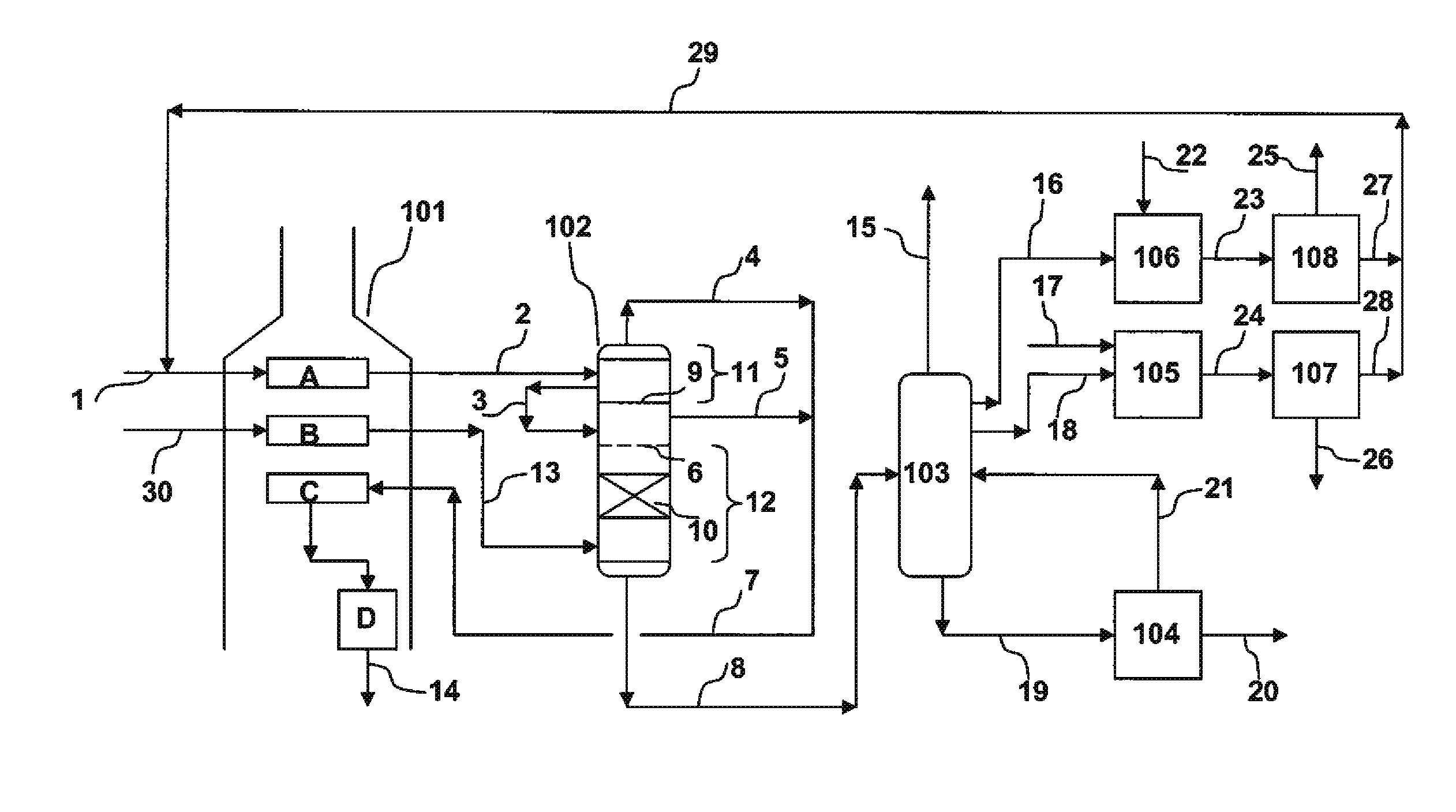Process for Cracking Heavy Hydrocarbon Feed
- Summary
- Abstract
- Description
- Claims
- Application Information
AI Technical Summary
Problems solved by technology
Method used
Image
Examples
example
[0059]FIG. 1 illustrates a steam cracking process in an olefin plant according to this invention. A crude oil known as Arab Heavy crude is fed via line 1 to preheat zone A of the convection section of pyrolysis furnace 101 at a rate of 87,000 lb / h at ambient temperature and pressure. The Arab heavy crude contains about 31 wt % of hydrocarbons that boil at a temperature greater than 1,050 F (565° C.), including asphaltenes and tars. In the convection section, the feed is heated to about 740 F (393° C.) at about 60 psig, and then passed via line 2 into the upper zone 11 of vaporization unit 102. In zone 11, a mixture of gasoline and naphtha vapors are formed at about 350 F (177° C.) and 60 psig, which is separated from the remaining liquid. The separated vapors are removed from zone 11 via line 4.
[0060]The hydrocarbon liquid remaining in zone 11 is transferred to lower zone 12 via line 3 and fall downwardly in zone 12 toward the bottom of unit 102. Preheated steam at about 1,020 F (54...
PUM
 Login to View More
Login to View More Abstract
Description
Claims
Application Information
 Login to View More
Login to View More - R&D
- Intellectual Property
- Life Sciences
- Materials
- Tech Scout
- Unparalleled Data Quality
- Higher Quality Content
- 60% Fewer Hallucinations
Browse by: Latest US Patents, China's latest patents, Technical Efficacy Thesaurus, Application Domain, Technology Topic, Popular Technical Reports.
© 2025 PatSnap. All rights reserved.Legal|Privacy policy|Modern Slavery Act Transparency Statement|Sitemap|About US| Contact US: help@patsnap.com


